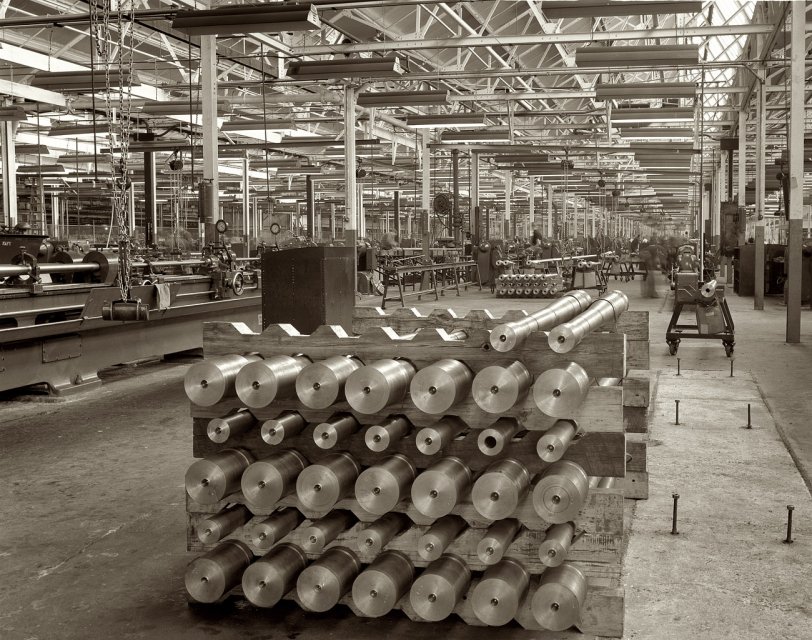


Framed or unframed, desk size to sofa size, printed by us in Arizona and Alabama since 2007. Explore now.
Shorpy is funded by you. Patreon contributors get an ad-free experience.
Learn more.

- Baldwin 62303
- Baldwin VO-1000
- Cold
- No expense spared
- Tough Guys
- Lost in Toyland
- And without gloves
- If I were a blindfolded time traveler
- Smoke Consumer Also Cooks
- Oh that stove!
- Possibly still there?
- What?!?
- $100 Reward
- Freeze Frame
- Texas Flyer wanted
- Just a Year Too Soon
- WWII -- Replacing men with women at the railroad crossing.
- Yes, Icing
- You kids drive me nuts!
- NOT An Easy Job
- I wonder
- Just add window boxes
- Icing Platform?
- Indiana Harbor Belt abides
- Freezing haze
- Corrections (for those who care)
- C&NW at Nelson
- Fallen Flags
- A dangerous job made worse
- Water Stop
Print Emporium
The New Chrysler: 1942

1942. Chrysler Corporation plant at Highland Park, Detroit. "Conversion. Here, in a former automobile plant, 40 mm. anti-aircraft gun barrels are machined and made ready for front-line duty. Since they must shoot fast-moving objects at great distances, they must be finished to the very finest of tolerances." Medium format negative by Alfred Palmer for the Office of War Information. View full size.
Chrysler Engineering
My uncle, who worked for Chrysler for many decades, had four small volumes published by Chrysler explaining what that corporation did during World War 2. It has been more than 20 years since I read the same. However, I think I remember something about these guns. They were the Bofors gun, a Swedish design licensed and used by all the belligerents of that war. They were a 40 mm, rapid fire, repeating anti-aircraft canon which required many hours of work by highly skilled machinists to produce all the intricate parts of the repeating mechanism.
Chrysler received a large contract from the US Army to produce approximately 40,000 guns, each with a spare barrel and mounted singly on a trailer (probably not the correct term for this mounting system). After producing about 30,000 guns, the contract was cancelled in 1944 because the guns were not wearing-out as expected. The barrels in particular lasted for many more rounds than were originally specified.
Chrysler also sped up delivery of the guns by using their newly developed powdered metal technology for fabricating the intricate parts, which avoided the necessity of time consuming machining. Early on, one part of the automatic mechanism failed after too few rounds were fired. The engineers solved this problem not by beefing up the part to make it stronger, but by thinning it to allow it to be more flexible. Ingenious!
























On Shorpy:
Today’s Top 5